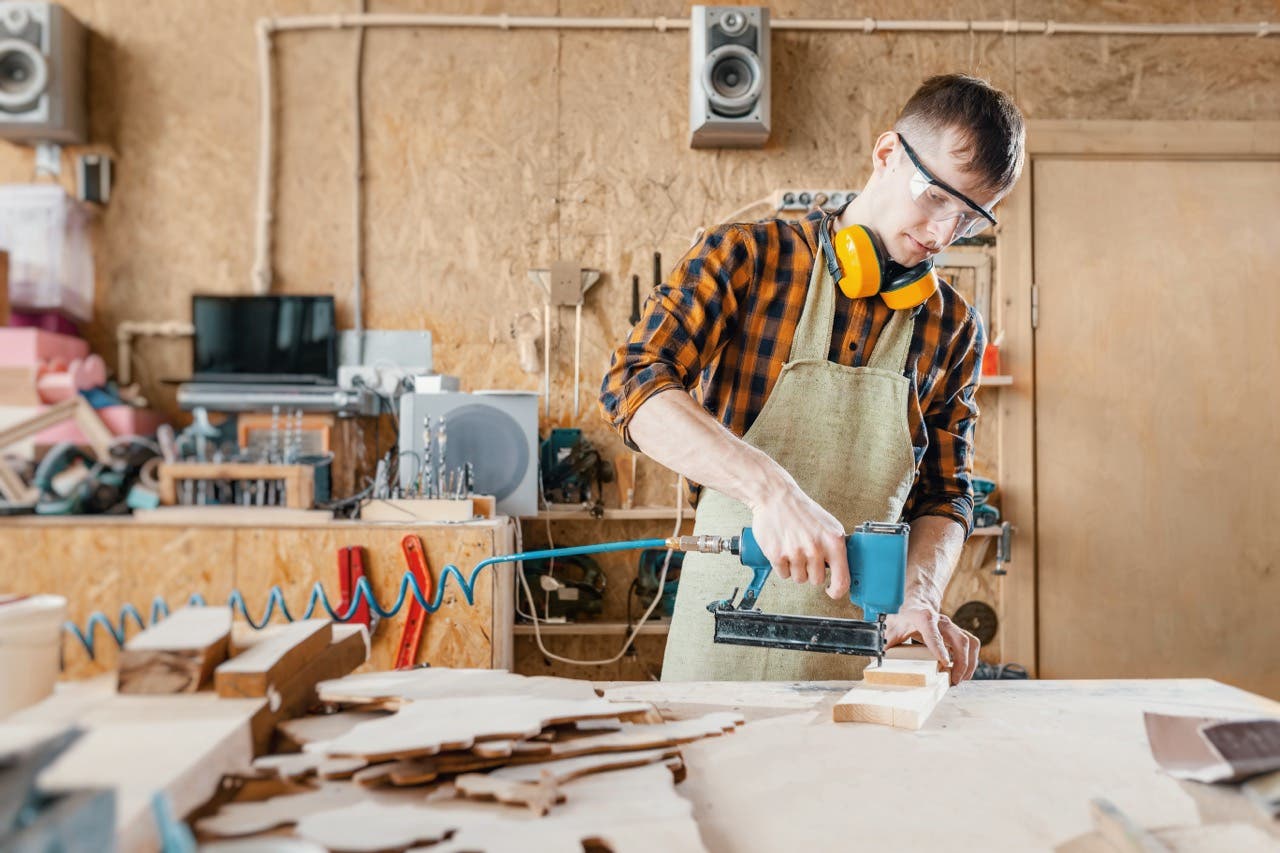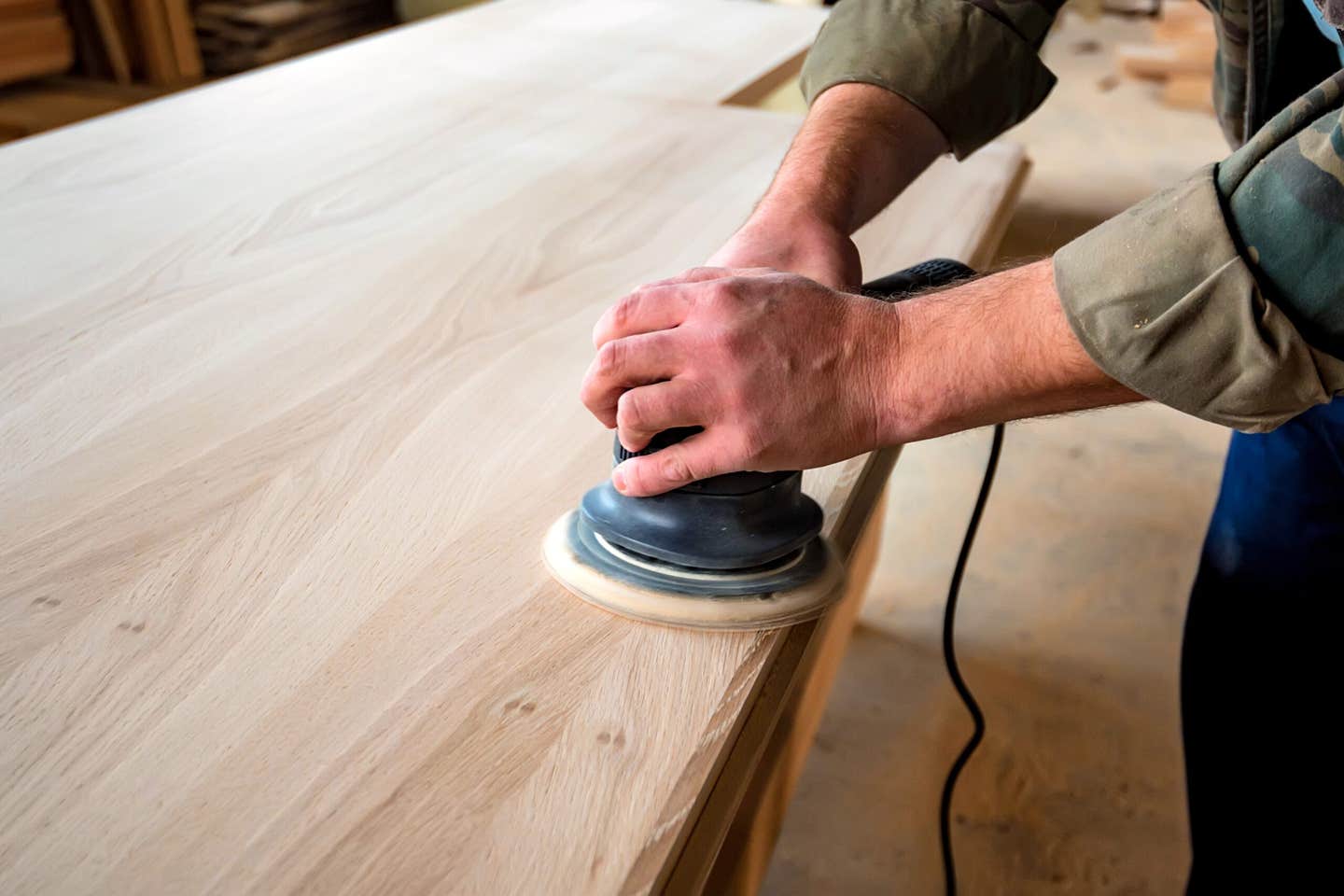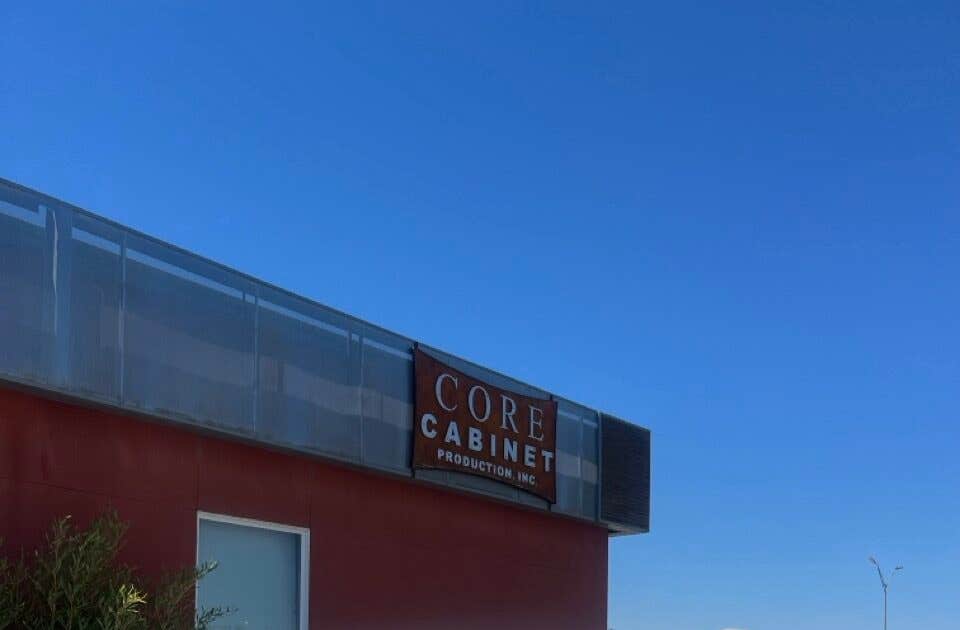Going with the Grain
Woodshops that produce flooring are usually among the first to notice new consumer appetites.
Woodshops that produce flooring are usually among the first to notice new consumer appetites. The buyer-driven trends that they watch have a strong influence on the species of hardwoods in the market, and also on the way they are processed.
Among the indicators of taste this spring are several tendencies toward the past – wider and also more varied width boards; grays and muted colors that work better with monotone cabinetry; a return to parquet hardwood tiles; and even a revival of 1970’s intentional distressing. With flooring, while the species is definitely important, it doesn’t seem to be quite as much an issue as the treatment and finish.
Marni Jameson of the Times-Picayune in New Orleans wrote in January that she sees shades of blue-green as the top designer color this year, along with blackened floors (yup, black!), although she says that gray stain continues to be popular. And she quotes Beverly Hills designer Christopher Grubb (christophergrubb.com) as predicting that “on cabinets and floors, we’re moving away from white and gray into wood tones and finishes.” Again, the stress isn’t so much on species as treatment, and the tendency seems to be a return to warmer textures.
A recent Houzz (houzz.com) report, called the 2018 Kitchen Trends Study, notes that 43 percent of new kitchen cabinets are still white. The good news for woodworkers is 73 percent of the survey respondents want custom or semi-custom cabinets. Shaker-style, five-part, flat-panel doors still rule, appearing in 57 percent of new kitchens. On the other hand, Houzz also noted that genuine hardwood floors are continuing to lose ground to engineered hardwoods and laminates.
But real wood, it seems, is gaining ground against foil and paint on cabinets at about the rate that it is losing out to laminate flooring. And just to confuse the heck out of woodworkers, the online real estate database Zillow is also questioning the industry’s faith in foil by predicting the return of medium- and light-toned hardwood cabinetry in 2018. (By the way, Zillow also says we’re going to matte metal hardware, which reaches even farther back than the ’70s.)
Window shopping
Woodshops that are ready to jump on that train back to natural surfaces are going to find a lot of support from specialty hardwood suppliers.
For example, Hearne Hardwoods in Oxford, Pa. (hearnehardwoods.com) is currently offering a mix of English sycamore logs, all with a wide range of figure. The boards are at least 2” thick with few defects beyond small knots and end checks. Hearne is also running a special this spring on hardwoo d flooring in a number of species including rustic and figured walnut, curly and bird’s-eye maple, and some interesting European pear.
And for shops that really want something different, Keim Lumber Co. in Charm, Ohio, stocks more than 60 exotic and specialty wood species from places as diverse as the West Indies, Africa and the Pacific Rim. There’s a virtual tour on the website, keimlumber.com.
Woodworkers who build outdoor furniture might want to explore the possibilities of mukulungu, which is more commonly known as African redwood. According to Northwest Hardwoods (northwesthardwoods.com), which has 11 yards on the West Coast and in the Midwest, mukulungu is a great choice for outdoor use “because of its durability, rich color and fine texture.” And with pricing lower than both composites and comparable exotic hardwoods such as ipé, it’s becoming very trendy of late. Northwest also offers a catalog that runs from alder to zebrawood, including virtually every species and grade of commercially viable North American hardwood lumber and more than 35 exotics.
Many suppliers mentioned to Woodshop News that the perennial quartersawn white oak is once again one of the strongest trends in hardwood. Standing out from the pack there can be a challenge, but Talarico Hardwoods in Mohnton, Pa. (which is best known for old-growth quartered white oak) will soon be offering a selection of quartered Scottish oak that was purchased from an old estate. Some of it is four feet and better in diameter. Warning: furniture builders and architectural millwork buyers will probably drool over the images on the company’s website, talaricohardwoods.com.
For woodshops that wish to work with some unusual oak, Roberts Plywood (roberts-plywood.com) in Deer Park, N.Y., recently offered 3,600-year-old fossilized Italian oak logs for sale. They come with carbon dating certificates verifying the authenticity of each log. These are milled into live edge slabs along with sections of the stump and root. The company has also just made a flitch of guanacaste available to its customers (you can learn more about this species and others from The Wood Database, at wood-database.com). The river-reclaimed log was harvested deep in the jungle of Belize, and it’s a medium to large tree, growing to 75’–105’ tall with a trunk up to 10’ in diameter.
Woodshops trying to spot trends in specialty hardwoods can also take a virtual, self-guided tour of some of the county’s best suppliers by visiting sites such as Bailey Wood Products in Pennsylvania (baileywp.com); Berkshire Products in Massachusetts (berkshireproducts.com); Eisenbrand Inc. Exotic Hardwoods in California (eisenbrandhardwoods.com); Gilmer Wood Co. in Oregon (gilmerwood.com); L.L. Johnson Lumber Mfg. Co. in Michigan (theworkbench.com); Lewis Lumber Products in Pennsylvania (lewislp.com); Northland Forest Products in New Hampshire (northlandforest.com); Rare Woods USA in Maine (rarewoodsusa.com); The Hardwood Connection in Illinois (thehardwoodconnection.com); and West Penn Hardwoods in North Carolina (westpennhardwoods.com).
Politics and global trade
When it comes to trends in this market, global trade is one of the key influences on the species we choose. Supply and demand set prices and availability, so any disruptions in the flow of hardwoods will affect the product choices that woodshops offer customers. The heavy hand of Washington has a lot to do with that.
Many of the hardwoods that we use are grown along, and on either side of, the Canadian border. And most exotics are imported, too. In a throwback to earlier times, the U.S. has recently introduced a philosophy of restrictive and protectionist tariffs in a number of industries, from solar panels to washing machines and, of course, wood products. Our trade partners are astonished that this is happening in a global economy that has evolved over the past 40 years to espouse and foster free trade. The U.S. government is getting more involved in regulating the importation of Chinese plywood, the exportation of American hardwoods, and the cross-border trade of Canadian forest products, to name a few areas of contention.
There’s support for such policies among some of the titans of industry. But lower down on the food chain, employees and consumers are beginning to wonder how a global trade war might affect the way they shop in terms of prices, options, supply and even their jobs. London’s Financial Times, for example, has opined that these new U.S. tariffs will “likely cause the loss of more jobs than they save.” That’s definitely a concern in the hardwoods industry, but also in woodshops, too.
America & Australia first
Another trend in specialty hardwoods this year has a lot to do with environmental issues. There is a movement toward opening logging in areas that have traditionally been protected, and this will probably affect the supply and selection of some species.
For example, the Cleveland Plain Dealer recently ran a piece by James F. McCarty regarding a decision by the Ohio Division of Forestry to post a draft proposal on its website, which it called the “Restoring Native Hardwoods Initiative.” This proposal would change the designation for thousands of acres in the southern half of the Mohican-Memorial State Forest that previously had been shielded by future old-growth status as High Conservation Value Forest.
And Interior Secretary Ryan Zinke has been in the news a lot over the past few months regarding his plans to shrink the boundaries of many National Monuments, modify others, and open vast tracts of federal land to commercial use that includes forestry. Part of that effort is seen as a way to promote homegrown species as an alternative to importing specialty hardwoods from abroad, especially as those imports will probably be getting a lot more expensive soon because of new tariffs. For now, it seems that the various sides in this discussion are still sharpening their swords, but there is potential for some fairly disruptive battles in the hardwoods market. And probably more disconcerting is a shift in the price and supply of softwood cores that are used to create hardwood panels.
Much of the U.S. government’s involvement in the timber trade is an effort to thwart the Chinese practice of buying raw logs in North America, shipping them home, and then add value by processing them in Chinese mills. Local companies then use cheap labor to manufacture cabinets and furniture that are, in turn, marketed back in the U.S. Australia has been having the same problem, and the Aussie timber processor Hermal Group has just begun to work on a new mill in Tasmania that will be the country’s largest plantation-based hardwood (primarily eucalyptus) mill, and its first ever hardwood cross-laminated production plant. It will initially process about 1/3 million cubic yards of plantation hardwood logs every year, most of which would otherwise have been shipped to China for milling. Eucalyptus is not a very stable wood, so it is probably of more interest as a component than boards. But look Down Under for a new trend in affordable hardwoods over the next few years that is based on eucalyptus boards and wood products.
This article originally appeared in the March 2018 issue.







